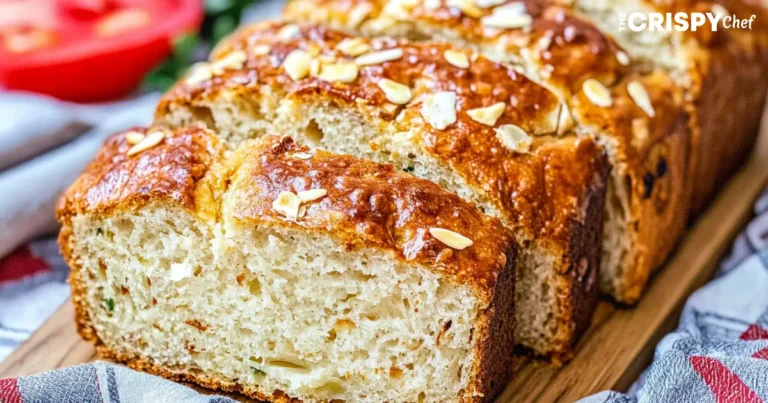Experience the classic flavors of New Orleans with our French jelly filled beignet recipe. These light, airy pastries, filled with sweet jelly, are a favorite treat often paired with café au lait. Perfect for bringing a taste of the Big Easy to your kitchen, this French jelly filled beignet recipe is ideal for breakfast, brunch, or dessert!
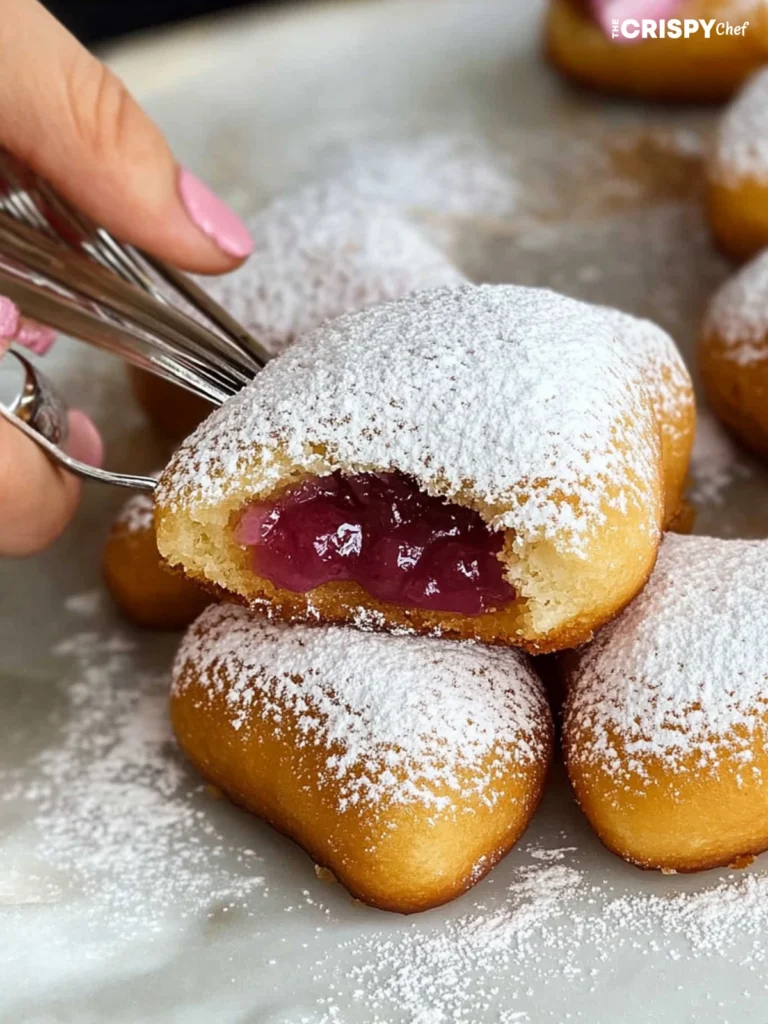
Key Takeaways
- Beignets are a classic New Orleans treat, known for their light, fluffy texture and generous dusting of powdered sugar.
- This recipe yields 30 beignets, perfect for sharing with friends and family.
- The key to achieving the perfect beignet texture is properly activating the yeast and allowing the dough to rest.
- Frying the beignets to a golden brown ensures they puff up beautifully, with a crisp exterior and soft, airy interior.
- Filling the beignets with your favorite jelly or other sweet fillings adds an extra layer of deliciousness.
Understanding Traditional French Beignets and Their Origins
Beignets, those delightful square-shaped pastries from New Orleans, have a rich history. They date back to the French colonization of Louisiana. These light, airy fritters were brought to the United States by French colonists and Acadians. They became a beloved part of Creole cuisine in the 18th century.
History of New Orleans Style Beignets
The beignet, pronounced “ben-yay,” found its way to New Orleans. It quickly became a signature dish of the city. Cafe du Monde, a renowned establishment in the French Quarter, has been serving these iconic beignets since 1862. Today, beignets are one of only two official state donuts in the United States, the other being the Boston cream doughnut in Massachusetts.
What Makes Beignets Different from Regular Donuts
Unlike traditional donuts, beneigh are distinctive in their shape and texture. They are square-shaped, lighter, and hollow in the middle. Most of the sweetness comes from a generous dusting of powdered sugar rather than the dough itself. This sets them apart from the more familiar round, dense donuts.
The Cultural Significance of Beignets
Beignets have become deeply intertwined with the culture and identity of New Orleans. These beloved pastries are a point of pride for the city. They draw visitors from around the world to indulge in the unique experience of enjoying a freshly fried beignet at Cafe du Monde or other local establishments. Beyond beignets, New Orleans is renowned for a variety of signature dishes, such as bananas foster, bread pudding, and king cakes. All of these contribute to the rich culinary heritage of this vibrant city.
“Beignets are a way of life in New Orleans, a delicious tradition that connects us to our French roots and the unique Creole culture of the city.”
Essential Ingredients for Perfect Homemade Beignets
Making delicious french beignets at home needs the right ingredients. The base is a light, yeasted dough. It’s made with all-purpose flour, active dry yeast, sugar, shortening, and salt. The dough also gets richer with boiling water, evaporated milk, and beaten eggs.
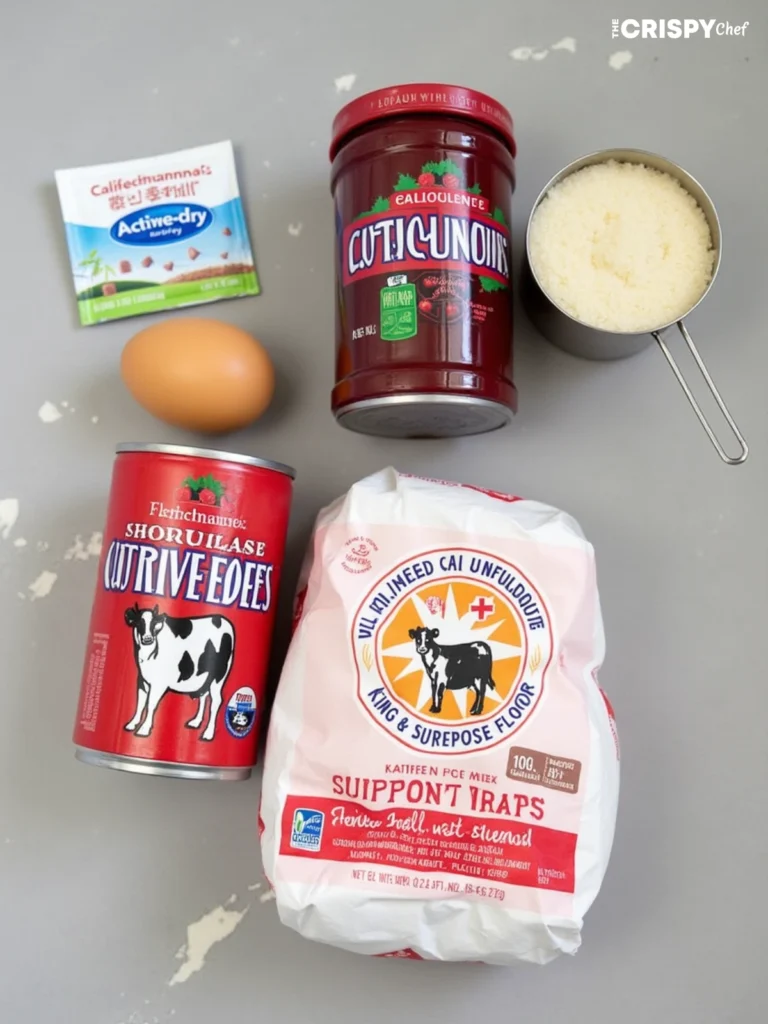
Here’s what you’ll need for the best French beignets:
- All-purpose flour (7 1/2 cups)
- Active dry yeast (1 tablespoon)
- Granulated sugar (1/2 cup)
- Shortening (1/4 cup)
- Kosher salt (1 teaspoon)
- Boiling water (1 cup)
- Evaporated milk (1 cup)
- Eggs (2, beaten)
- Vegetable oil for frying
- Confectioners’ sugar for dusting
Some recipes use bread flour for a chewier texture. The mix of these ingredients, with careful preparation and frying, makes perfect homemade beignets. They bring the true taste of New Orleans to your table.
“Beignets are the perfect balance of crisp exterior and airy, pillowy interior – a true taste of New Orleans tradition.”
Kitchen Tools and Equipment Needed
To make delicious homemade beignets, you need some key kitchen tools. Let’s explore the essential equipment for this tasty French pastry.
Essential Frying Equipment
- A deep, wide, heavy-bottomed skillet or Dutch oven for frying the beignets
- A candy or deep-fry thermometer to monitor the oil temperature, which should be maintained between 350°F and 375°F
- A slotted spoon or tongs to carefully lower and retrieve the beignets from the hot oil
- Paper towels or a wire rack for draining the freshly fried beignets
Dough Preparation Tools
For mixing and shaping the beignet dough, you’ll need the following:
- Mixing bowls, preferably in various sizes for different stages of the recipe
- A stand mixer with a dough hook attachment, which makes kneading the dough a breeze
- A rolling pin to evenly roll out the dough to the desired thickness
- A knife or pizza wheel cutter to neatly slice the dough into the classic beignet shape
Safety Equipment for Deep Frying
Deep frying can be hazardous, so it’s essential to have the proper safety equipment on hand:
- Oven mitts or heat-resistant gloves to protect your hands from hot oil
- Long-handled utensils to prevent oil splashes and ensure safe handling of the beignets
With these essential tools and equipment, you’ll be well on your way to mastering the art of making delectable beignets and french beignets in your own kitchen.
French Jelly Filled Beignet Recipe: Step-by-Step Instructions
Try the tasty french jelly filled beingets with this simple recipe. It’s perfect for both experienced bakers and beginners. Follow this guide to make these fluffy, sweet pastries.
First, mix the yeast. In a bowl, combine 1.5 cups of warm water and 1 envelope of active dry yeast. Add 1/2 cup of granulated sugar, saving the rest for later. Let it sit for about 10 minutes until it foams.
In a big bowl, mix 4 cups of bread flour and the saved 1/2 cup of granulated sugar. Make a hole in the middle and add the yeast mix, 1 large egg, and 1 cup of evaporated milk. Mix the dough until it’s shaggy.
Put the dough on a floured surface and knead for 10 minutes. Add the rest of the 3 cups of bread flour until it’s smooth. Put it in a greased bowl, cover it, and chill for 30 minutes to 1 hour.
Roll out the dough to 1/4-inch thickness. Cut into diamond shapes, about 2-3 inches wide. Heat 3-4 inches of canola oil in a pot to 350°F to 360°F.
Fry the dough shapes for about 2 minutes per side, until golden. Drain on paper towels and dust with confectioners’ sugar.
Enjoy your french jelly filled beingets while they’re warm. The dough can be kept in the fridge for up to a week. This way, you can make these treats whenever you want.
| Prep Time | Cook Time | Total Time | Yield |
|---|---|---|---|
| 25 mins | 35 mins | 5 hrs | 5 dozen beingets |
Mastering the Dough Making Process
Making the perfect beignet dough is key to these tasty French pastries. To get the right light and airy texture, you need to master the dough making process. We’ll look at how to activate yeast, knead and rest the dough, and get the right consistency.
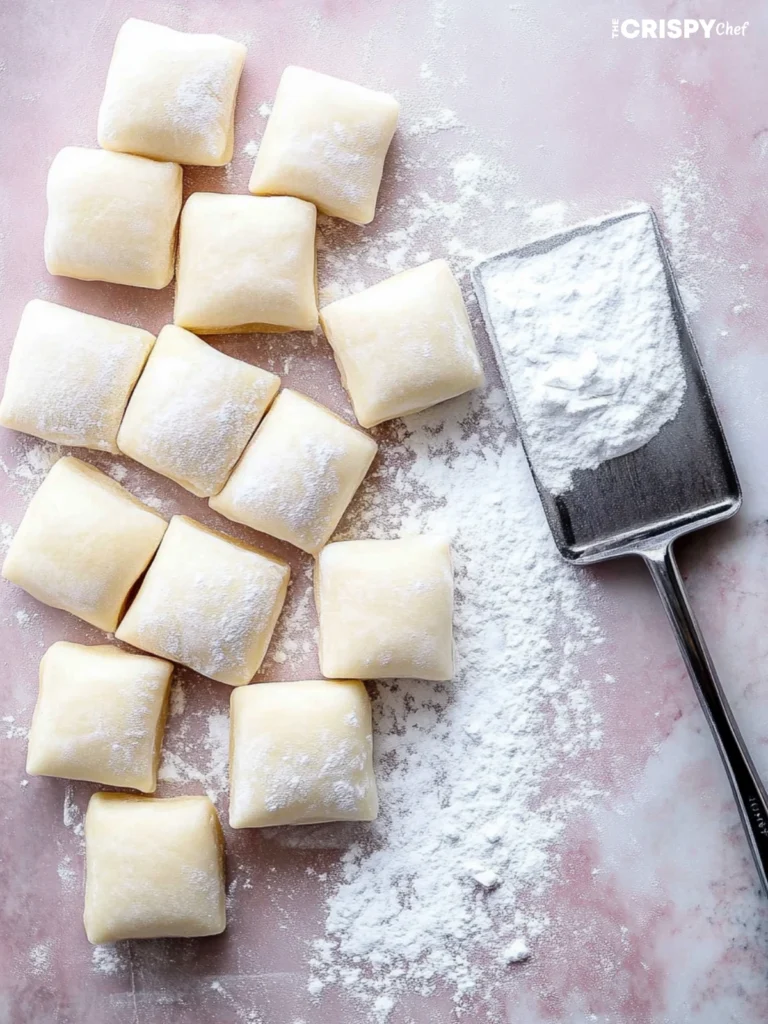
Proper Yeast Activation Techniques
Yeast is what makes beignet dough rise. So, it’s important to activate it right. Use warm milk or water, between 100°F and 110°F, to dissolve the yeast. Add a bit of sugar to feed the yeast, then let it rest for 5-10 minutes. When it gets foamy and bubbly, it’s ready to go.
Kneading and Resting Times
After activating the yeast, knead the dough. Do this for 5-7 minutes until it’s smooth and elastic. This helps the dough rise well and gives it a good texture. Let the dough rise in a warm place for 2-4 hours, or chill it for 4-24 hours for a slower rise.
Dough Consistency Tips
The ideal beignet dough is slightly sticky but easy to handle. If it’s too dry, add a bit of warm milk or water. If it’s too sticky, add a little flour. You want a dough that’s soft and easy to work with.
By following these dough-making tips, you’ll make french beignets that are light and delicious. Remember, the dough is the base of a great beignet. So, take your time to get it right.
Deep Frying Techniques for Perfect Results
Learning to deep fry is key for making the perfect beneigh pastries from New Orleans. These pastries should be light, airy, and golden. To get it right, follow these deep frying tips.
- Keep the oil temperature between 350°F and 360°F for the best frying. Use a candy thermometer to check the temperature and adjust the heat as needed.
- Fry the beneigh pastries in small batches. This prevents the oil temperature from dropping too much. It helps them cook evenly and get that perfect puff.
- Fry each beneigh for about 2 minutes on each side. They should be golden brown and puffed up. Use medium heat to avoid burning the outside before the inside is cooked.
For delicious homemade beneigh pastries, keep the oil at the right temperature. Fry in small batches. These tips will help you make authentic pastry from new orleans flavors and textures.
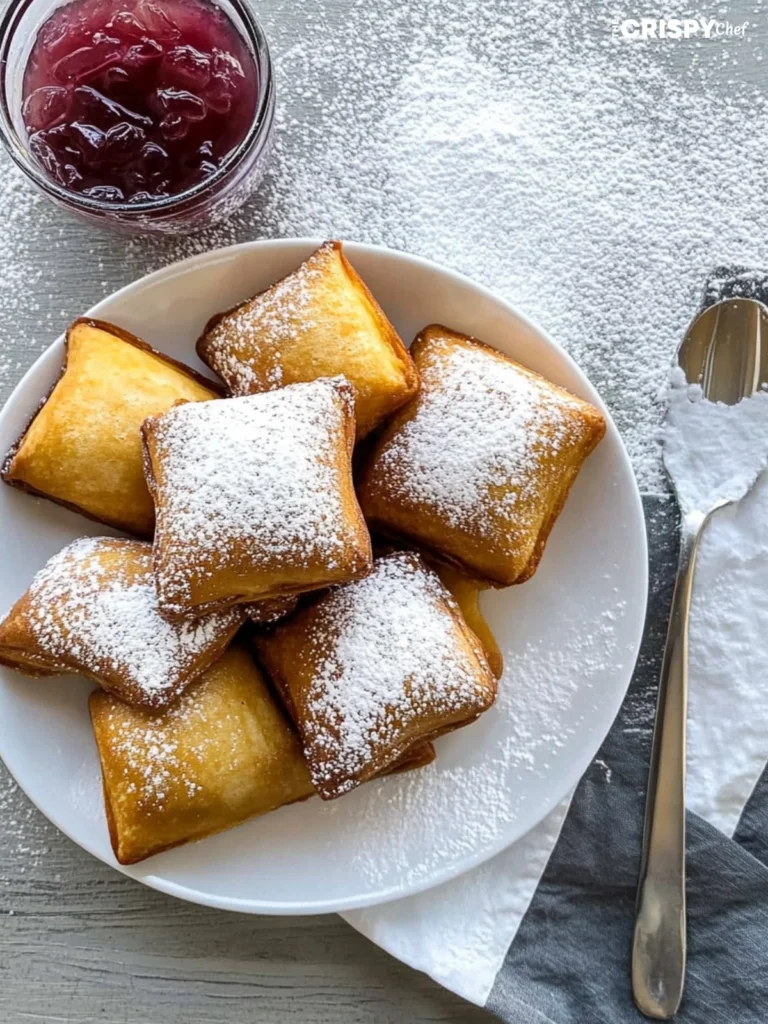
“The perfect beneigh is a delicate balance of crisp exterior and soft, pillowy interior – a testament to the skill and care of the chef.”
By using these deep frying tips, you’ll soon be making irresistible homemade beneigh pastries. They’ll impress any New Orleans native.
Filling and Decorating Your Beignets
Make your homemade french jelly filled beignet recipe even better by adding fillings and decorations. Try traditional jelly fillings or get creative with new flavors. It’s a fun way to surprise your taste buds.
Traditional Jelly Filling Options
- Strawberry preserves
- Raspberry jam
- Blackberry compote
- Apricot jam
Creative Filling Variations
- Chocolate hazelnut spread
- Lemon curd
- Dulce de leche
- Peanut butter and jelly
To fill your beingets, just make a small hole in each beignet. Then, pipe in your chosen filling. Make sure to fill them well for a tasty surprise.
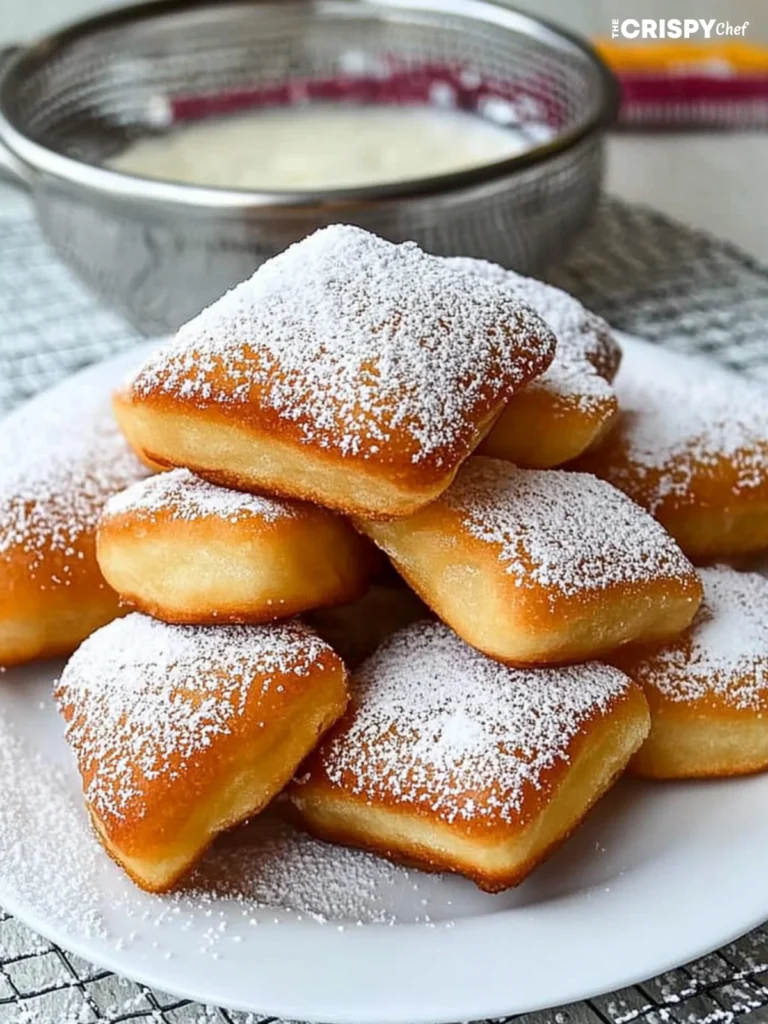
Dusting and Presentation Tips
For a classic look, dust your beingets with confectioners’ sugar. Use a fine-mesh sifter for a smooth finish. Or, toss them in a paper bag with sugar for a perfect coat.
Enjoy your beignets right away for the best taste and texture. Their light inside and crispy outside are perfect with sweet fillings. Treat yourself or share with loved ones for a taste of France.
Storage Tips and Make-Ahead Instructions
Enjoying fresh, warm beignets is a true delight. The dough can be prepared in advance to save time. Whether for a Mardi Gras celebration or just a craving, these tips will help you succeed.
The best way to enjoy beignets is to serve them right after frying. But, you can make the dough up to 24 hours in advance. Keep it in a greased, tightly wrapped bowl or airtight container to prevent drying.
Before frying, let the dough come to room temperature. This ensures the beignets puff up well. Let it sit for at least 30 minutes before shaping and cooking.
If you have leftover beignets, store them in an airtight container at room temperature for up to two days. To reheat, place them in a 350°F oven for a few minutes. For longer storage, beignets can be frozen for up to 6 months without glaze or toppings. Thaw at room temperature before reheating and serving.
Mastering make-ahead beignets and storage techniques lets you enjoy these French pastries anytime. You won’t have to start from scratch each time.
Troubleshooting Common Beignet Problems
Making the perfect beneigh, the famous pastry from new orleans, is a fun challenge. It’s important to know how to fix common issues. This way, your beignets will always be light, fluffy, and delicious.
One big problem is when beignets turn out flat and dense. This usually happens if you roll the dough too thin. Keep it at 1/4-inch thick for the best puffiness. Also, don’t overwork the dough during kneading and shaping.
Another issue is when the centers of beignets are raw. This often means the oil wasn’t at the right temperature. Make sure your oil is between 350°F and 360°F. If it’s too hot, the outside will brown too fast, leaving the inside raw.
- Keep the oil temperature steady while frying.
- Don’t overcrowd the oil to avoid lowering the temperature.
- Use a deep-fry thermometer to check the oil temperature.
Lastly, beignets can soak up too much oil if the temperature is too low. Watch the oil closely and adjust the heat as needed to keep it in the right range.
“The key to perfectly fried beignets lies in striking the right balance between temperature and timing.”
By using these tips, you’ll get better at making beneigh. Enjoy the sweet, soft goodness of your homemade pastry from new orleans with confidence and pride.
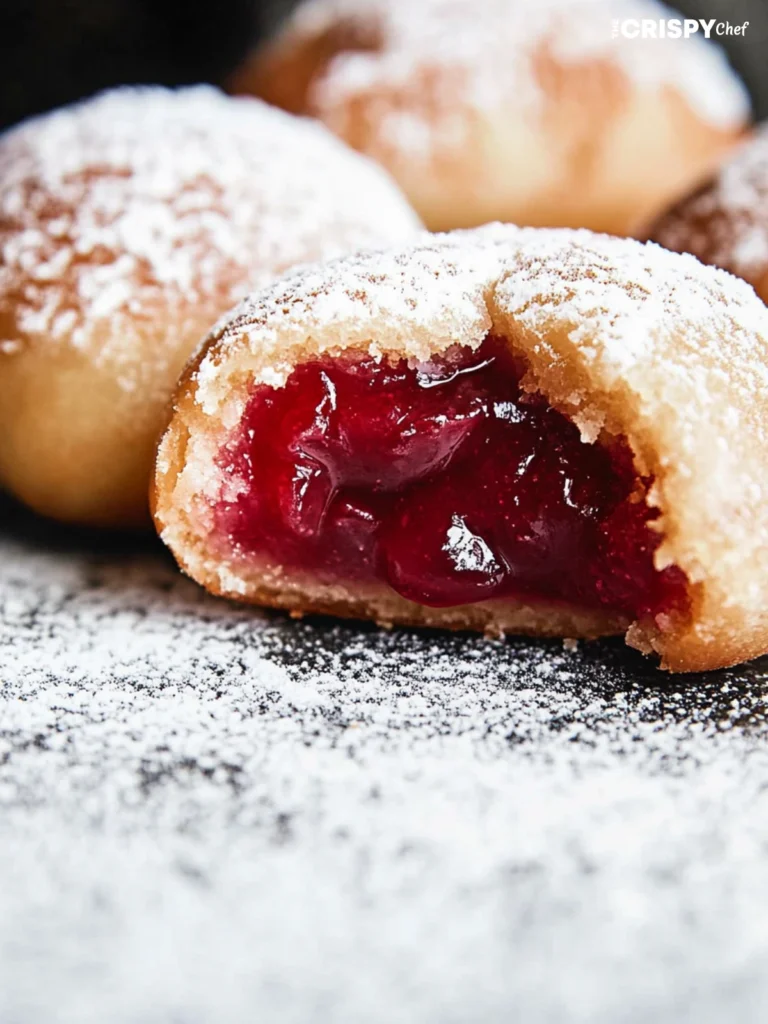
Conclusion
Making French jelly filled beignets at home is a fun and rewarding task. By following the steps in this guide, you can make these light and tasty pastries in your kitchen. You can use traditional jelly or try new flavors, making your beignets a hit with everyone.
This guide covers everything from beignets’ history to making and frying the dough. It gives you all you need to make your own french jelly filled beignet recipe. You can get creative with your beingets, making them your own and serving them with pride.
So, get your ingredients ready and fire up the fryer. Enjoy making these famous French pastries. With a bit of practice, you’ll be making cafe-quality french jelly filled beignet recipe in no time. Your home will fill with the delicious smells and tastes of New Orleans.
1. What is the difference between French beignets and New Orleans beignets?
French beignets are often fruit-filled or savory, while New Orleans beignets are square-shaped, airy, and dusted with powdered sugar, served as a popular treat with coffee.
2. What are beignets called in France?
In France, beignets are simply called “beignets.” They come in various forms, from fruit-filled pastries to savory fried dough, depending on the region and local traditions.
3. Does Costco have beignets?
Costco occasionally sells pre-made or frozen beignets, depending on location and stock. You can check their bakery section or freezer aisles for this tasty treat.
4. What is the difference between a doughnut and a beignet?
Doughnuts are typically round with a hole or filling, while beignets are square, fried pastries, usually lighter and dusted with powdered sugar.
5. What is the English name for beignet?
Beignet is a French term that translates to “fritter” in English, referring to a piece of fried dough often sweetened and served as a dessert.
6. Are beignets just funnel cake?
No, beignets and funnel cakes are different. Beignets are square, fluffy fried dough pieces, while funnel cakes are made by pouring batter into hot oil to form a lacy pattern.
FAQ
What are beignets?
Beignets are light, airy, and square-shaped French-style fritters from New Orleans. They are deep-fried pastries, often dusted with powdered sugar. They can also be filled with fruit jelly.
What is the history of beignets?
French colonists brought beignets to the United States. They became a hit in New Orleans. Now, they are the official state doughnut of Louisiana.
How are beignets different from regular donuts?
Beignets are lighter and hollow in the middle. They are less sweet on their own. The sweetness comes from the powdered sugar topping.
What are the key ingredients for making beignets?
Key ingredients include all-purpose flour, yeast, sugar, shortening, and salt. You also need boiling water, evaporated milk, eggs, and vegetable oil. Confectioners’ sugar is used for dusting.
What equipment is needed to make beignets?
You need a deep skillet or Dutch oven for frying. A candy thermometer is also essential. You’ll need mixing bowls, a stand mixer, and a rolling pin.
A knife or pizza wheel cutter, slotted spoon, and paper towels or wire rack are also needed.
How do you properly activate the yeast for beignets?
Use warm milk or water (100°F to 110°F) to activate the yeast. Mix the yeast with the liquid and a bit of sugar. Let it rest until it becomes foamy (5-10 minutes).
What is the optimal oil temperature for frying beignets?
The best oil temperature is between 350°F and 360°F. Use a candy thermometer to check the temperature. Avoid high heat.
What are some common issues with making beignets?
Issues include flat beignets and raw centers. These problems come from wrong dough thickness and oil temperature. Keeping the oil at the right temperature and dough thickness is key.

French Jelly Filled Beignets
Equipment
- Mixing bowls
- Stand mixer with dough hook
- Rolling Pin
- Knife or Pizza Cutter
- Heavy-bottomed skillet or Dutch oven
- Candy or deep-fry thermometer
- Slotted spoon or tongs
- Paper towels or wire rack
- Fine-mesh sifter
Ingredients
- 7 1/2 cups all-purpose flour
- 1 tablespoon active dry yeast
- 1/2 cup granulated sugar
- 1/4 cup shortening
- 1 teaspoon kosher salt
- 1 cup boiling water
- 1 cup evaporated milk
- 2 eggs beaten
- Vegetable oil for frying
- Confectioners’ sugar for dusting
Instructions
Prepare the Yeast Mixture:
- Combine 1.5 cups of warm water, yeast, and 1/2 cup of sugar. Let it sit for 10 minutes until foamy.
Mix the Dough:
- In a large bowl, mix 4 cups of flour and the remaining sugar. Add the yeast mixture, eggs, and evaporated milk. Mix until shaggy.
Knead the Dough:
- Knead on a floured surface, gradually adding the remaining 3 cups of flour. Knead for 10 minutes until smooth. Place the dough in a greased bowl, cover, and chill for 30 minutes to 1 hour.
Roll and Cut the Dough:
- Roll out dough to 1/4-inch thickness. Cut into 2-3 inch diamond shapes.
Fry the Beignets:
- Heat oil to 350°F-360°F. Fry dough pieces for 2 minutes per side until golden. Drain on paper towels.
Dust and Fill:
- Dust beignets with confectioners’ sugar. Make a small hole and pipe in your choice of filling, such as jam or chocolate hazelnut spread.
Serve:
- Enjoy warm for the best texture and flavor.








